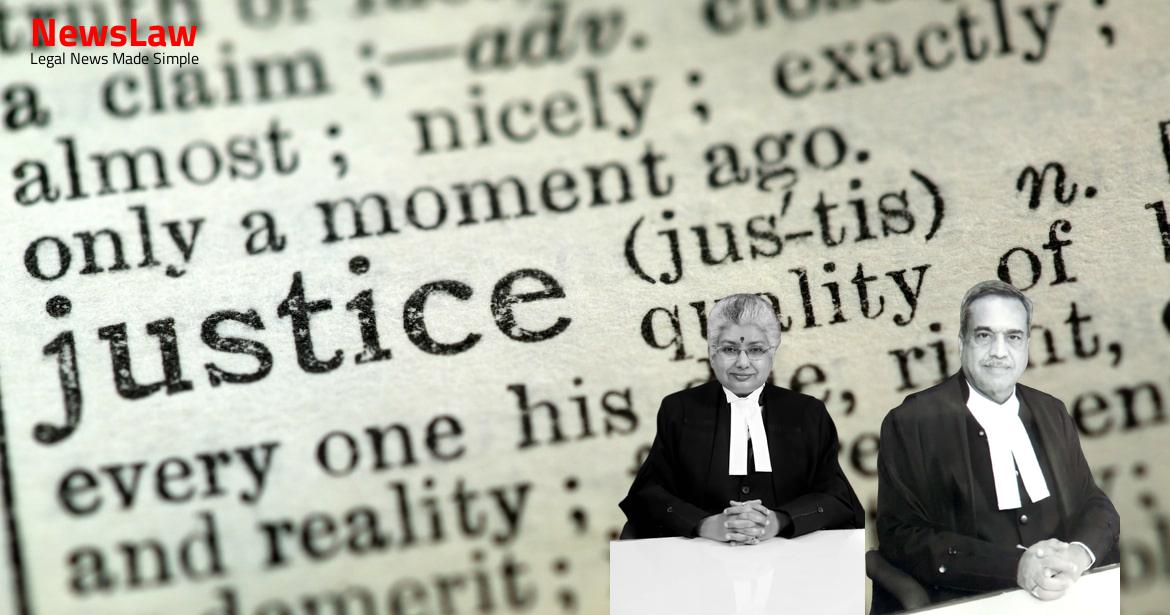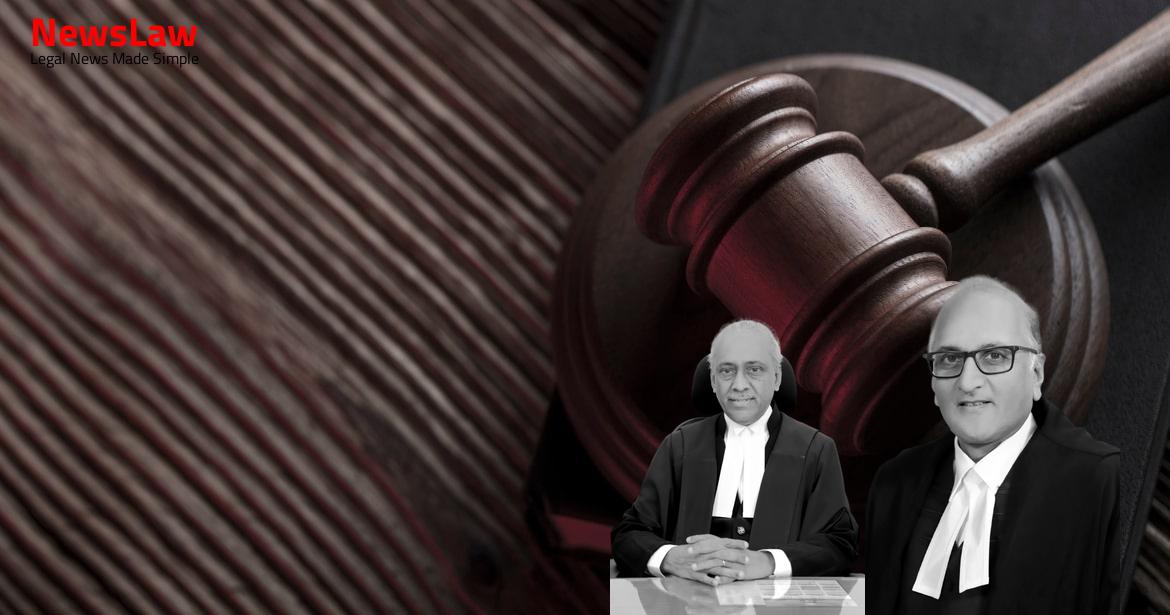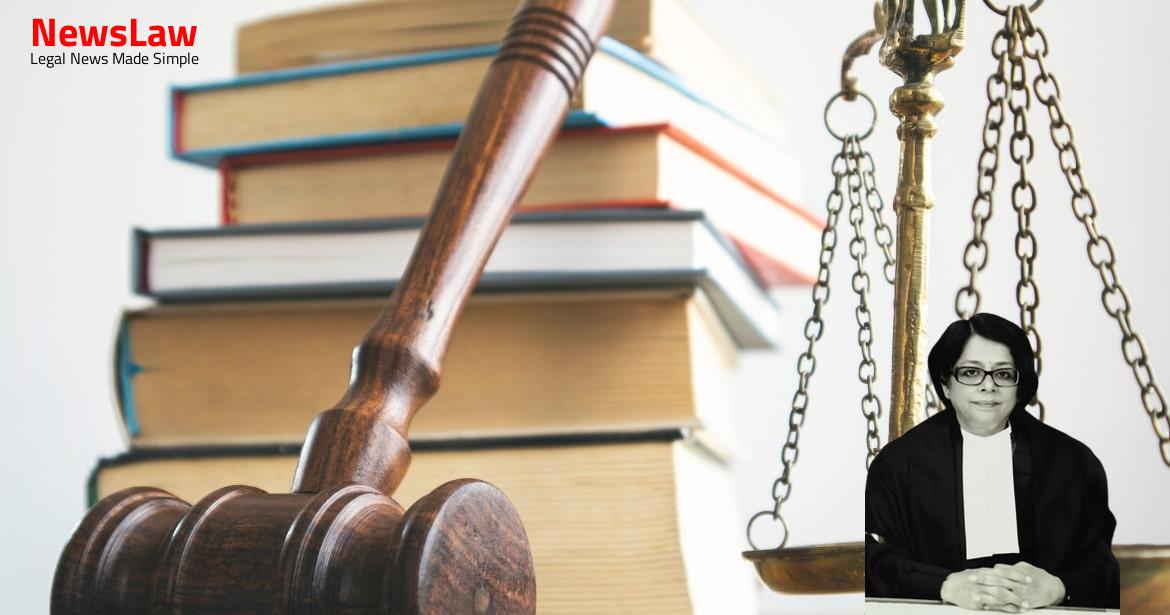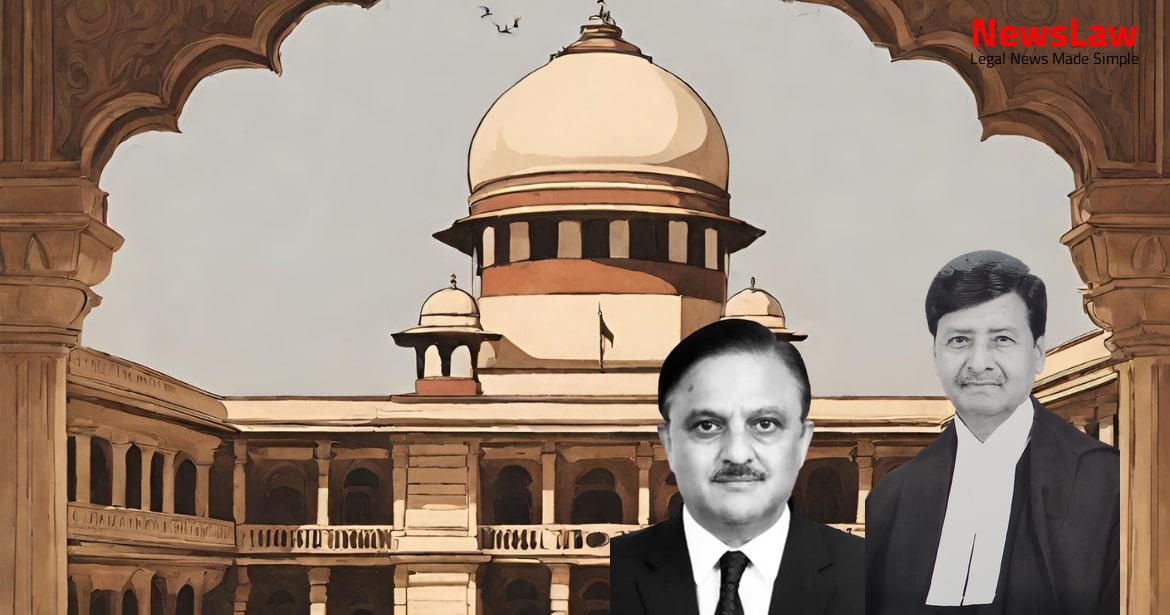In a recent legal case, the court delved into the detailed analysis of allowing the withdrawal of CIRP proceedings through a settlement agreement. The focus was on the legal implications, procedural aspects, and the balance of interests between the parties involved. Understanding the court’s rationale and interpretation of the relevant laws sheds light on the complexities of insolvency law and the significance of settlements in such proceedings.
Facts
- Original applicants filed IA No. 18679 of 2022 under Article 142 of the Constitution of India along with Rules 11 and 12 of the NCLT Rules, 2016
- Original applicants seek to withdraw CIRP proceedings upon payment of Rs. 3,36,02,000/- with interest from amount deposited by appellant
- Court disposed IA Nos. 131763/2020 and 130570/2021 with liberty for applicants to pursue other remedies to protect their rights
- Settlement reached between original applicants and 79 home buyers with corporate debtor to complete project and hand over possession within one year
- Request for disposal of matter made in light of settlements
- The Home buyers have settled the dispute with the Corporate Debtor, agreeing to complete the project and hand over possession within one year.
- The Appellant deposited Rs. 3,36,02,000/- with the court, due to an inordinate delay in project completion by the Corporate Debtor.
- Original applicants sought refund of Rs. 6,93,02,755/- for delays and failure to hand over possession.
- A caveat was filed by Krrish Provence Flat Buyers Association to safeguard home buyers’ interests.
- Appellant agreed to refund Rs. 3,36,02,000/- with interest to the original applicants, settling the dispute.
- Original applicants requested to withdraw CIRP proceedings as per the settlement.
- The proceedings were adjourned as the dispute between the parties was being settled with the Corporate Debtor agreeing to complete the project on time.
- NCLT admitted the Section 7 application and declared a moratorium.
- Appellant challenged the admission order before NCLAT, attempting a settlement which did not materialize.
- The Corporate Debtor, Jasmine Buildmart Pvt. Ltd., undertook the housing project Krrish Provence Estate in Gurgaon.
Also Read: Ruling on Circumstantial Evidence in Murder Case
Arguments
- Learned counsel appearing on behalf of the respective parties have prayed to exercise powers under Article 142 of the Constitution of India for the withdrawal of CIRP proceedings in the interest of home buyers.
- The majority of home buyers, the appellant, and the Corporate Debtor have settled disputes and agreed to a proposed settlement plan.
- The settlement includes a commitment to complete the entire project within one year and offer possession to the home buyers.
- Out of 176 units, 79+3 home buyers have settled the dispute and accepted the joint statement regarding the settlement plan.
- The agreed settlement involves completing the project, handing over possession, and continuing maintenance services as per the Agreement to Buyers and Allottees (ABA).
- Learned counsel for the respective parties heavily relied upon paras 82 to 87 of the decision in Swiss Ribbons Private Limited v. Union of India and another, and the order in Kamal K. Singh v. Dinesh Gupta & Another.
- The Court permitted withdrawal of CIRP proceedings in the Kamal K. Singh case due to settlement between parties.
- The arguments of both parties were heard at length.
Also Read: Challenging Legal Presumptions in Negotiable Instrument Cases
Analysis
- Section 12A of the IBC allows for withdrawal of application with approval of 90% voting share of COC.
- The intent of the Code is to involve all creditors in the insolvency proceedings, not just the applicant creditor and the corporate debtor.
- The procedure for withdrawing an application under Section 12A is in Regulation 30A of the CIRP Regulations, 2016.
- The withdrawal of CIRP application can have significant consequences on homebuyers if not permitted.
- The Insolvency Law Commission Report highlights the rationale behind Section 12A.
- In certain cases, judicial permission for withdrawal of CIRP was granted due to settlements between applicant creditor and corporate debtor.
- NCLT can allow or disallow withdrawal or settlement application at any stage before COC is constituted or after its constitution.
- If CIRP fails, the builder-company may have to go into liquidation as per Section 33 of the IBC.
- The original applicants are seeking withdrawal of CIRP proceedings based on settlement terms with the Corporate Debtor.
- 82 out of 128 home buyers support the proposed settlement and withdrawal of CIRP proceedings.
- COC comprises 91 members, with 70% being members of the Flat Buyers Association willing for CIRP proceedings to be set aside based on the settlement plan.
- Continuing the CIRP proceedings would result in a moratorium under Section 14 of the IBC and stay of all pending proceedings.
- The court has stayed the impugned order immediately upon the constitution of COC.
- As per the decision in Brilliant Alloys Pvt. Ltd. v. S. Rajagopal, the provision is held to be directory depending on the facts of each case.
- The legislative intent behind amendments to the Insolvency and Bankruptcy Code (IBC) is to secure, protect, and balance the interests of all home buyers.
- Home buyers are protected by requiring a threshold of at least 100 or 10% of total allottees to initiate Corporate Insolvency Resolution Process (CIRP) against a builder.
- The amendments aim to prevent potential abuse of the Code by certain classes of financial creditors.
- The purpose of IBC is not to kill the company or halt the project but to ensure the company’s business functions as a going concern.
- In cases where settlement is possible and in the larger interest of home buyers, the court can exercise powers under Article 142 of the Constitution of India for resolution.
- In the specific case mentioned, a settlement between home buyers, the appellant, and corporate debtor is likely to benefit 82 out of 128 home buyers by providing possession within a year.
Also Read: Legal Analysis Critique in High Court’s Quashing Order
Decision
- The original joint statement regarding the settlement plan dated 27.01.2022/3.2.2022 must be placed on record within a week if not already done.
- Consumer Case CC No 984 of 2019 and Criminal Complaint Case No 540/2021 filed by respondent Nos. 1 to 3 are dismissed as withdrawn/quashed.
- Application under Section 7 of the IBC, 2016 bearing CP No 1722/ND/2018 filed by respondent Nos. 1 to 3 is permitted to be withdrawn.
- Orders passed by NCLT, New Delhi, including appointment of IRP and constitution of COC are quashed and set aside.
- Appellant directed to pay Rs.6,00,000/- to IRP within two weeks for expenditures and litigation costs.
- CP No. 1722/ND/2018 pending before NCLT, New Delhi stands dismissed as withdrawn.
- Undertakings to be filed within a week by the appellant and respondent No.4, backed by the Company’s Resolution.
- Maintenance services to continue as per the ABA, and application to be made for obtaining Occupancy Certificate within six months.
- Respondent Nos. 1 to 3 to be paid Rs.3,36,02,000/- along with accrued interest from amount deposited by appellant earlier.
- Impugned judgment and order passed by NCLAT also stands quashed and set aside.
- Copy of the order to be placed before National Consumer Disputes Redressal Commission, New Delhi, and Chief Metropolitan Magistrate, SED, New Delhi.
- Appellant and respondent No.4 directed to file separate undertakings within a week ensuring project completion and possession to home buyers.
- IA No. 18679/2022 in Civil Appeal No 3778/2020 filed by respondent Nos. 1 to 3 allowed.
- Joint statement regarding the settlement plan dated 27.01.2022/03.02.2022 and list of Krrish Provence Flat Buyers Association members to be taken on record.
Case Title: AMIT KATYAL Vs. MEERA AHUJA (2022 INSC 260)
Case Number: C.A. No.-003778 / 2020



